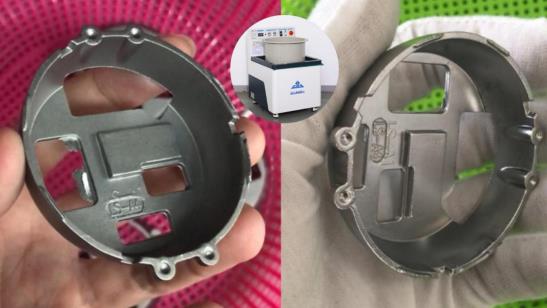There are several ways to remove stains from stainless steel :
Use pickling method: pickling method can remove the oxide layer on the surface of stainless steel, eliminate mottled spots, and make the surface show a bright luster. Pickling agents can use chemical substances such as hydrochloric acid and nitric acid, and attention should be paid to safe operation and neutralization and cleaning after pickling.
Mechanical Polishing: Mottling can be removed by polishing the stainless steel surface with tools such as abrasive cloth wheels, abrasive belts, or a polishing machine. It is generally recommended to use a 180# emery cloth wheel (or coarser) for rough grinding, and then gradually use a finer emery cloth wheel for grinding and polishing refinement.

Red brick, white wine and orange peel method: The pure natural method can use red brick, alcohol and orange peel to quickly remove the stains on the stainless steel surface and make the surface smooth. You can make a paste mixture of red bricks, alcohol and orange peel, apply the mixture on the spot, and wipe it with a towel, and the uneven surface of the stainless steel surface will become smooth.
Different methods are suitable for different stainless steel surface states and mottled degrees. Before choosing the correct method, it is necessary to carefully check the surface state and choose the relevant removal method according to the actual situation. At the same time, before using either method, you need to experiment first in a relatively inconspicuous area to avoid unnecessary damage to the workpiece.
De-oxidizing polisher, supporting specimens
There may be several reasons for mottling on the surface of stainless steel:
Environmental corrosion such as acid rain: Common environmental factors such as acid rain and factory exhaust gas may cause mottled spots on the surface of stainless steel.
Erosion of corrosive media: Substances such as strong acid, strong alkali, salt, chlorine, etc. will chemically attack the surface of stainless steel, causing mottled appearance on the surface.
Magnetic polishing machine, easy to operate, saving time and effort
Surface scratches or scratches: Because the surface hardness and strength of stainless steel are very high, surface scratches and scratches may be caused by friction, wear, etc. during use and processing, and these surface defects may gradually fade during subsequent use. Formation of piebald.
Improper design and manufacture of corrosion reasons: In the design and manufacture of stainless steel workpieces, if they are not handled properly, not thoroughly or use inferior raw materials, local corrosion may occur during use, which may cause surface mottling.
Others: It is also possible that the surface is contaminated with foreign matter, or the surface is affected by moisture and knife marks on the surface.










You must be logged in to post a comment.